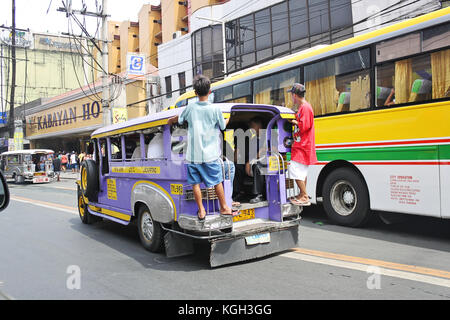Increase Your Service with Transit Advertising Philippines
Increase Your Service with Transit Advertising Philippines
Blog Article
Just How Transportation Marketing Can Transform Public Transportation Spaces Into Dynamic Marketing Operatings Systems
Transit advertising and marketing holds substantial possibility to redefine public transport rooms right into vibrant advertising platforms that notify and involve. By making use of cutting-edge formats such as interactive kiosks and digital screens, brands can not just reach a varied target market however also enhance the overall commuter experience. This strategy creates an unique possibility for brand names to get in touch with customers in a setup that is typically forgotten. As we discover the diverse benefits and evolving methods of transit advertising, it increases the question of just how this transformation can redefine our communications with both brands and the city setting.
Benefits of Transportation Advertising

Additionally, transportation advertising and marketing is extremely economical contrasted to standard media. It allows advertisers to achieve high impacts at lower prices, making the most of roi. The restricted target market of commuters supplies an opportunity for brand names to share their messages to people that are commonly responsive throughout their traveling times.
Additionally, the dynamic nature of transportation marketing enables projects to be upgraded regularly, guaranteeing that messaging remains appropriate and timely. This flexibility can be important in reacting to market fads or promotional occasions, maintaining the brand top-of-mind for consumers. Lastly, the pervasive visibility of transit advertising and marketing contributes to brand name recall; duplicated direct exposure within familiar travel contexts reinforces brand name recognition and cultivates customer commitment, ultimately driving sales and boosting brand name reputation.
Kinds Of Transit Marketing
Mass transit systems provide different layouts for marketing, each satisfying different advertising and marketing strategies and target market engagement methods. One noticeable type is outside bus and train wraps, which cover the whole vehicle and develop a mobile billboard impact, enabling for high exposure in metropolitan settings. These covers can record interest as they pass through busy roads, reaching a varied target market.
One more popular style is interior advertising, which consists of posters, digital displays, and ads on transit seats. These positionings involve guests throughout their trip, strengthening brand name messaging in a restricted room. Digital presents, particularly, provide the benefit of vibrant material, enabling marketers to upgrade messages in real-time.
Station advertising and marketing is likewise significant, featuring posters, banners, and interactive kiosks within transit stations. These ads leverage foot traffic and can target details demographics based on location.
Last but not least, advertising partnerships with transportation authorities can lead to unique campaigns, such as themed transportation experiences or events, boosting the overall involvement with travelers. Each sort of transit advertising and marketing provides distinct benefits, enabling brands to tailor their strategy to properly reach their target audience within the general public transport ecological community.
Engaging Travelers Properly
Travelers are increasingly swamped with marketing messages during their day-to-day travels, making it vital for brands to involve them in ingenious ways. To record attention in this congested space, marketers need to focus on creative thinking and relevance. Utilizing attractive visuals and concise messaging can significantly enhance the possibility of engagement.
Interactive elements, such as QR codes or enhanced reality functions, can additionally change fixed ads into immersive experiences, fostering a deeper link with the target market. Brand names must concentrate on addressing commuters' needs and passions, tailoring messages to reverberate with their way of life, whether with promos for neighborhood businesses or solutions developed to boost their commuting experience.
Additionally, timing plays an important function; tactically putting advertisements during height commuting hours can optimize presence and influence. Involving travelers efficiently additionally includes leveraging social media sites assimilation, allowing passengers to share their promotions or experiences straight from transportation systems, thereby magnifying brand name reach.
Fundamentally, efficient interaction depends upon recognizing the commuter journey and developing engaging, interactive, and pertinent advertising experiences that not only capture attention however additionally drive action and loyalty. By doing so, brand names can transform public discover this transport right into a vibrant advertising system that reverberates with its audience.

Measuring Marketing Impact
Just how can brand names properly examine the performance of their ad campaign in transit atmospheres? Determining the impact of transportation advertising and marketing needs a complex strategy that incorporates measurable and qualitative metrics. One common method is tracking engagement with mobile analytics, where brand names can analyze foot web traffic patterns and application interactions in the past, throughout, and after projects.
Surveys can provide useful insights right into brand name recall and customer view, permitting brand names to gauge exactly how well their messages resonate with travelers. Additionally, monitoring social media involvement related to details campaigns can reveal changes in public perception and brand name conversation.

Additionally, teaming up with transportation agencies can boost measurement accuracy, as they often have thorough group information on ridership trends. By incorporating these methods, brands can develop an extensive understanding of their advertising and marketing performance, guaranteeing that their campaigns not just get to but additionally affect their target market effectively.
Future Fads in Transit Advertising
A significant shift is anticipated in transit advertising as technological innovations and altering customer actions reshape the landscape. Transit Advertising Philippines. The assimilation of interactive media and electronic screens is expected to enhance engagement, allowing brand names to deliver vibrant web content that reverberates content with diverse audiences. As public transportation systems embrace clever technology, marketers will certainly take advantage of real-time information analytics to customize messages based on guest demographics and behaviors
Moreover, enhanced truth (AR) is positioned to transform the method commuters engage with promotions. By supplying immersive experiences, AR can change a mundane journey right into an interesting story that catches interest and fosters brand loyalty. This advancement will likely motivate marketers to create even more experiential campaigns that drive consumer interaction.
Sustainability is one more crucial pattern influencing transportation advertising and marketing. As ecological awareness grows, brand names will significantly look for to straighten with environmentally friendly techniques, utilizing sustainable materials and advertising green initiatives within their campaigns.
Verdict
To conclude, transportation advertising and marketing provides significant benefits Read More Here by improving brand name exposure and engaging a captive audience. Via numerous formats, such as exterior wraps and electronic screens, it transforms mass transit right into a lively marketing system. Reliable involvement techniques and durable measurement methods additionally enhance its effect. As trends advance, the potential for cutting-edge communications between brands and travelers is poised to expand, making certain that transportation marketing stays a crucial component of modern advertising and marketing methods.
Transportation advertising and marketing holds significant possibility to redefine public transport spaces into vibrant marketing platforms that engage and notify. The prevalent existence of transportation advertising contributes to brand recall; repeated direct exposure within acquainted travel contexts strengthens brand name understanding and promotes customer commitment, eventually improving and driving sales brand name credibility.
Exactly how can brand names properly examine the efficiency of their advertising and marketing campaigns in transit atmospheres?In verdict, transportation marketing provides considerable benefits by improving brand presence and involving a restricted audience. Transit Advertising Philippines. As trends progress, the possibility for innovative communications in between brands and commuters is positioned to expand, guaranteeing that transportation advertising and marketing stays an essential component of modern advertising techniques
Report this page